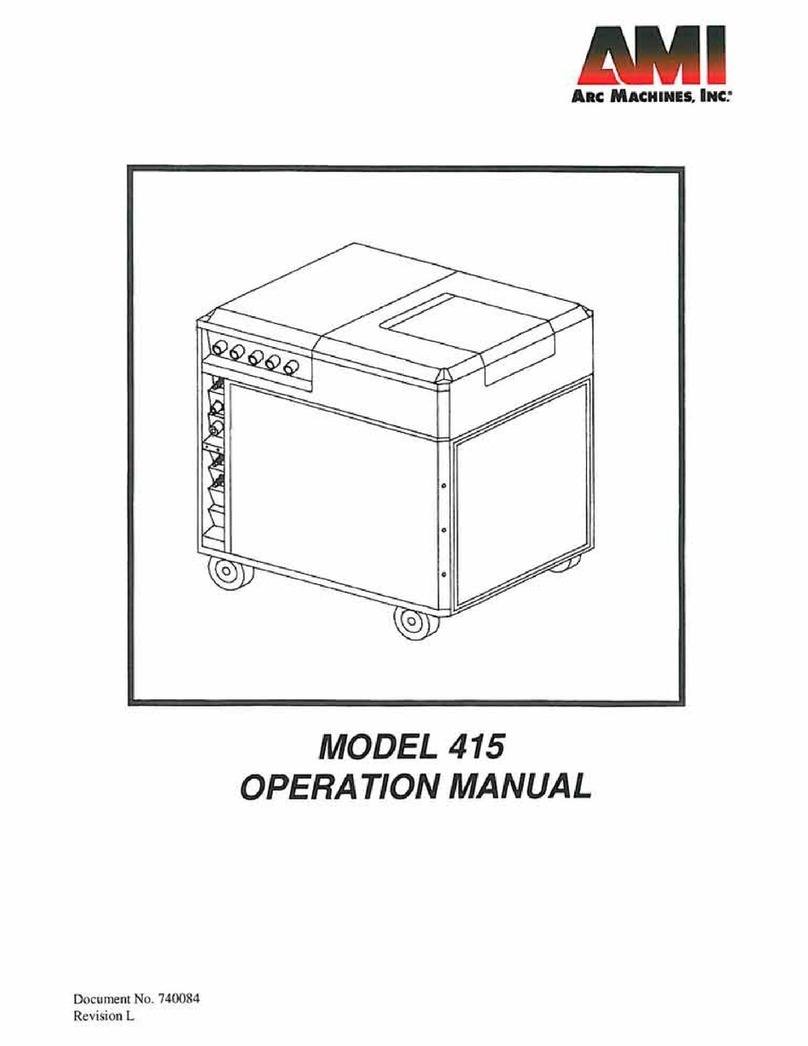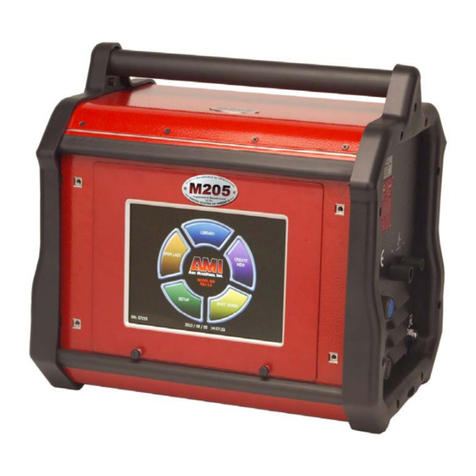
Model 415
Operation Manual
Document No. 740084
Revision N
4
6. Before operating, insure that the M-415 has adequate air flow. Do not restrict the intakes or
exhaust vents of the power supply.
7. Before operating, always insure that there is bare metal contact between the weld head
components which connect to GROUND (clamp inserts, etc.) and the tube or pipe to be
welded.
8. When storing or handling weld heads, always keep them in the protective containers they are
shipped in, or optional carrying case, until ready to install.
9. When operating, storing or handling, insure that the system is protected against dirt, dust,
etc. NEVER GRIND NEAR AN EXPOSED WELD HEAD OR THE M-415.
10. Do not use acid, corrosives, liquid “Easy Out” or any liquid substance on the M-415 or any
AMI weld head. When cleaning, use only a light solution of Isopropyl alcohol on a soft cloth .
11. When handling, take extreme care to avoid dropping the M-415, weld heads, cables or any
accessories.
12. Do not attempt to move tube end into position using the weld head as a lever.
13. Do not add any lubrication like graphite, oil or grease to the weld heads or power supply
unless it is specified in the operation or maintenance manual for that equipment.
1.3 RF AND EMI EMISSIONS
1. WHY RF?
“It has long been recognized that in the practice of welding and cutting, there are
circumstances where it is required to assist the process using radio frequency voltage. In
order to arc weld an electric arc must be created, because of safety and economic concerns,
the no load voltage of arc power sources is kept as low as practical. Thus, a source of high
voltage with a high safety factor must be utilized. Radio Frequency voltage is the best
method of meeting these criteria for many reasons” (quoted from CISPR/B/63).
2. RF REGULATION
The FCC regulates the RF emission limitations for welding equipment by the use of an IEC
(international) regulation created by the Special Committee on Radio Interference (known
as CISPR) subcommittee B. The regulation of record is: CISPR/B/63
“CODE OF PRACTICE FOR THE USE OF WELDING AND CUTTING POWER SOURCES
UTILIZING RADIO FREQUENCY VOLTAGE FOR STARTING OR STABILIZING THE
ARC.”
The regulation states that due to the variety of work requirements and conditions it is
virtually impossible to establish fixed, normalized and predictable tests and test setups for
RF limits that would actually mean something. Instead of limits they state the following:
“The manufacturer must design and produce equipment that is functional but at the same
time, design this equipment to keep electromagnetic radiation at a minimum.”
“The user has the responsibility to install and use the power source per the instructions of
the manufacturer. Through this practice, it is reasonable to assume that the probability of
electromagnetic disturbances will be significantly reduced. However, if some electromagnetic
disturbances are felt, then it is the responsibility of the USER of the equipment to resolve
the situation.”





























